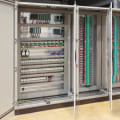Having a reliable braking system is essential for any vehicle, regardless of its make or model. Without it, drivers can find themselves in dangerous situations - and facing expensive repairs. Fortunately, upgrading your vehicle's braking system is an easy and cost-effective way to ensure that your car is as safe as possible. Whether you have a Triumph TR or any other type of vehicle, investing in upgraded brakes can provide you with better stopping power and improved safety.
In this article, we'll discuss the different types of braking system upgrades available and how to choose the best option for your car. A braking system upgrade is a modification to your vehicle's brakes that improves the way your car stops. Upgrading your braking system can make a dramatic difference in how well your vehicle performs under all driving conditions. It can also improve safety and performance, while also increasing the life of your brakes. The process of upgrading a braking system begins with a thorough inspection of the existing system, and then the components can be replaced or improved upon.
This includes changing out the brake pads, rotors, drums, calipers, and the brake fluid. Depending on the make and model of your vehicle, you may also need to install new brake lines, hoses, and other components. One of the main benefits of a braking system upgrade is improved stopping power. Brake upgrades allow for more effective and consistent braking, which is especially important when driving in wet, icy, or slippery conditions.
By upgrading your brakes you can also reduce brake noise and vibration, improving the overall riding experience. Additionally, upgraded brakes tend to last longer than standard brakes, so you may not need to replace them as often.
Common upgrades for a braking system
include upgrading the brake pads, rotors, and drums. Brake pads are typically made of a material such as ceramic or sintered metal which provide better performance than standard brake pads. Upgraded rotors and drums can also help improve stopping power and reduce noise.You may also want to consider upgrading the calipers or installing bigger brakes if you're looking for improved performance. There are several different types of brake upgrades available, depending on your budget and performance needs. You can choose from ceramic pads, sintered metal pads, slotted rotors, drilled rotors, and even high-performance calipers. Some of these upgrades may require additional parts or modifications to work correctly with your vehicle.
The cost of a braking system upgrade
varies depending on the type of upgrades you choose.The cost will depend on the parts you select and the labor required for installation. Generally speaking, brake upgrades will cost anywhere from several hundred dollars up to several thousand dollars depending on the parts and labor involved.
Potential issues with a braking system upgrade
are rare but can occur if the wrong parts are used or if the installation is not done properly. If you choose to do the upgrades yourself, it's important to do research and make sure that you have the correct parts and installation instructions for your specific make and model of vehicle.Choosing the right upgrade for your vehicle
will depend on what type of performance you are looking for.If you are just looking for improved stopping power and longer lasting brakes then ceramic or sintered metal pads may be enough. If you want more aggressive stopping power then upgraded calipers or bigger brakes may be necessary. It's also important to consider how much money you want to spend on the upgrade as some options can be quite expensive.
What are the Costs of a Braking System Upgrade?
Installing a new or upgraded braking system in your vehicle can be a significant expense, but it can also be worth the investment in increased safety and improved performance. The total cost of a brake upgrade will vary depending on the parts and labor involved.When considering a brake upgrade, you should factor in the cost of the brake parts themselves. This includes rotors, calipers, pads, hoses, and other components. Many of these components can be purchased from aftermarket suppliers, which can help keep costs down. Additionally, if you're upgrading to a performance brake system, you may need to purchase other supporting components such as larger wheels and tires to accommodate the larger brakes.
Labor costs are also a major factor in the total cost of a brake upgrade. Professional installation is recommended for most brake upgrades, as it ensures that everything is installed properly and safely. Depending on your vehicle and the complexity of the upgrade, labor costs can range from a few hundred dollars to several thousand. To get an accurate estimate of the total cost of a brake upgrade, speak to a professional mechanic who is familiar with your vehicle and the type of upgrade you're considering.
They'll be able to provide you with an estimate based on the parts and services needed for your particular brake upgrade.
How Do I Choose the Right Upgrade for My Vehicle?
When it comes to upgrading your vehicle's braking system, it's important to choose an upgrade that meets both your specific needs and your budget. You will need to research the different types of upgrades available to you in order to make the most informed decision. It's important to research the types of upgrades available and find reliable sources for parts and installation. You will need to consider things such as the make and model of your vehicle, your driving style, and what type of braking system you have in order to determine the best upgrade for your particular needs. You should also consider the quality of parts you purchase. Look for reputable brands that use high-quality materials, as these are more likely to last longer and perform better.Additionally, you should research the cost of installation as this can vary depending on the type of upgrade and the complexity of the job. Finally, it's important to find a qualified mechanic or technician who can install the upgrade properly. This will ensure that your vehicle is safe and that the upgrade is installed correctly. Be sure to ask questions and get references if possible.
How Does a Braking System Upgrade Work?
Upgrading a vehicle’s braking system involves making modifications to its components and components of the vehicle itself. There are several parts that make up a vehicle’s braking system, such as the brake calipers, brake rotors, brake pads, and brake lines.The calipers are responsible for pushing the brake pads onto the rotors when the brakes are applied. The rotors are the discs that the pads press against to create friction and slow the vehicle down. The brake lines contain the brake fluid which is used to transmit pressure from the master cylinder to the calipers when the brakes are applied. Upgrading these components can improve both the performance and safety of the vehicle.
For example, installing larger brake calipers and rotors can increase the amount of force that is applied when braking, which can lead to shorter stopping distances and better control when braking. Installing upgraded brake pads can also increase friction and improve response time when applying the brakes. Upgrading the brake lines can also help to reduce heat build-up in the system, which can cause brake fade. Additionally, some braking system upgrades involve fitting aftermarket components such as high-performance brakes or suspension components.
These parts can increase the responsiveness of the brakes and provide better control when cornering or braking at high speeds. Upgrading suspension components can also help to reduce body roll and improve handling. Overall, upgrading a vehicle’s braking system can have a number of benefits, including improved performance and safety. The key is to understand what components need to be upgraded and how they will affect the vehicle’s performance.
What is a Braking System Upgrade?
A braking system upgrade is any modification to a vehicle's existing braking system to improve its performance.Upgrades can include any combination of new brake pads, rotors, calipers, lines, or fluid. All of these components work together to slow and stop the vehicle, and by improving them individually, the overall performance of the braking system can be increased. One of the most common braking system upgrades is the installation of performance brake pads. These pads are made of a more durable material than regular brake pads and provide better stopping power, even under extreme conditions. Additionally, they produce less brake dust and help reduce noise. Other upgrades include new calipers and rotors. Upgrades can include any combination of new brake pads, rotors, calipers, lines, or fluid. All of these components work together to slow and stop the vehicle, and by improving them individually, the overall performance of the braking system can be increased. One of the most common braking system upgrades is the installation of performance brake pads. These pads are made of a more durable material than regular brake pads and provide better stopping power, even under extreme conditions. Additionally, they produce less brake dust and help reduce noise. Other upgrades include new calipers and rotors.
Calipers are responsible for squeezing the brake pads against the rotor, and upgrading them can result in better control and responsiveness. Similarly, installing larger rotors will provide improved cooling and braking power. These upgrades are beneficial for vehicles that are used for performance driving or racing. Finally, upgrading the brake lines and fluid can also improve braking performance. Brake lines direct the pressure from the master cylinder to the calipers, and using performance lines with a higher burst pressure rating will increase braking power.
Additionally, using performance brake fluid is beneficial because it has a higher boiling point than standard fluid, which helps reduce brake fade.
What are the Different Types of Brake Upgrades Available?
When it comes to upgrading a vehicle's braking system, there are many different types of upgrades available. Some of the most popular include ceramic or composite brake pads, slotted rotors, performance calipers, and more. Ceramic or composite brake pads are designed to offer better braking performance than standard brake pads. They are made from a combination of ceramic and metal particles which create a more durable pad that can handle higher temperatures and provide smoother braking.Slotted rotors are a common upgrade as they help to reduce brake noise, improve heat dissipation, and reduce brake fade by allowing more air to pass through the rotor. Performance calipers are designed to provide better braking power and response by allowing for more pressure to be applied to the brakes. They also help to reduce brake dust, which can reduce the need for frequent cleaning. Upgrading any of these components can help to improve overall braking performance, while also providing a smoother and safer driving experience.
It's important to note that while these upgrades can provide better performance, they can also come with some drawbacks such as increased wear and tear on the brakes, higher maintenance costs, and more. Therefore, it's important to weigh all of the pros and cons before making any decisions.
Are There Any Potential Issues with a Braking System Upgrade?
When upgrading your vehicle's braking system, it is important to consider any potential issues that may arise. Some of the most common issues associated with a brake system upgrade include noise and vibration. Noise can be caused by brake pads that are not properly installed or that are too small for the brakes.Vibration can be caused by brakes that are not properly balanced or by excessive wear on the brake pads. Additionally, improper installation can lead to air getting trapped in the brake lines, which can lead to noise and vibration. These potential issues can be avoided or minimized by following proper installation procedures and regularly maintaining the brakes. It is important to follow the manufacturer's instructions when installing brakes, as incorrect installation can lead to problems. Additionally, regular maintenance such as checking and replacing brake pads, adjusting brakes, and checking for leaks is essential for ensuring optimal performance. In addition to noise and vibration, another potential issue with an upgraded braking system is the increased wear on the brakes.
This is because upgrades often involve larger brake pads or higher friction materials which will cause more wear on the brake components. To help minimize this issue, it is important to regularly check the brakes and replace worn components. Overall, upgrading a vehicle's braking system can provide better performance and safety for drivers. However, it is important to consider any potential issues that may arise, such as noise and vibration, and to follow proper installation procedures and regular maintenance to ensure optimal performance.
What are the Benefits of a Braking System Upgrade?
Upgrading your vehicle's braking system has many benefits, including improved stopping power, better handling, and increased safety. Improved stopping power means that you can stop faster and more efficiently.This can be especially beneficial when driving in wet weather, or in a situation where you need to suddenly stop. Better handling is another advantage of upgrading your braking system. You'll be able to have a smoother ride with more control over your vehicle. This is especially important when taking sharp turns or driving in tricky terrain. Finally, upgrading your braking system can also increase safety. Your vehicle will be able to stop more quickly and efficiently in emergency situations.
This can help you avoid potential accidents or other dangerous situations. These benefits can be seen in everyday driving. For example, when driving in wet conditions, an upgraded braking system will help you stop faster and with greater control. Similarly, when taking sharp turns or driving in challenging terrain, you'll be able to handle the situation more easily and safely.
What are the Common Upgrades for a Braking System?
When it comes to upgrading your vehicle's braking system, there are a variety of components that can be upgraded to improve performance. Some of the most common upgrades include brake pads, rotors, calipers, and more.Brake pads are the most common upgrade, as they provide the friction necessary to stop the vehicle. Upgrading your brake pads can provide improved braking performance and increased stopping power. Rotors are the circular metal discs that the brake pads press against to create friction when braking. Upgrading your rotors can improve brake response time, reduce brake fade, and increase the longevity of the brakes.
Calipers are the mechanisms that squeeze the brake pads against the rotors, creating friction and stopping power. Upgrading your calipers can provide better performance and response time. Other components of a braking system may also be upgraded, such as the master cylinder or ABS (anti-lock braking system). Upgrading these parts can help ensure that your brakes are working properly and at their best.
Upgrading any part of your braking system is an important step in improving performance and ensuring safety. By understanding what each component does and how it contributes to improved performance, you can make sure you have the best braking system possible. In conclusion, upgrading your vehicle's braking system can be a great way to improve performance, safety, and reduce costs in the long run. Before making any upgrades, it's important to research and understand the different types of brake upgrades available, the potential issues associated with them, and the cost implications. This will ensure that you choose the best upgrade for your needs and budget. Whether you're looking for improved stopping power, better handling, or additional safety features, upgrading your braking system can provide the desired results.
With the right knowledge and research, you can confidently select the upgrade that best fits your needs.


